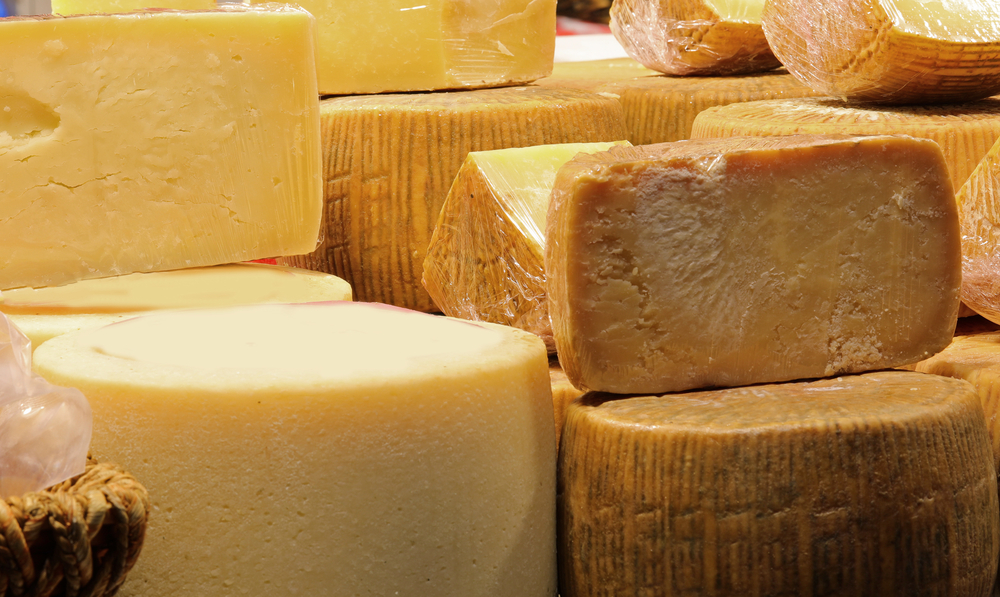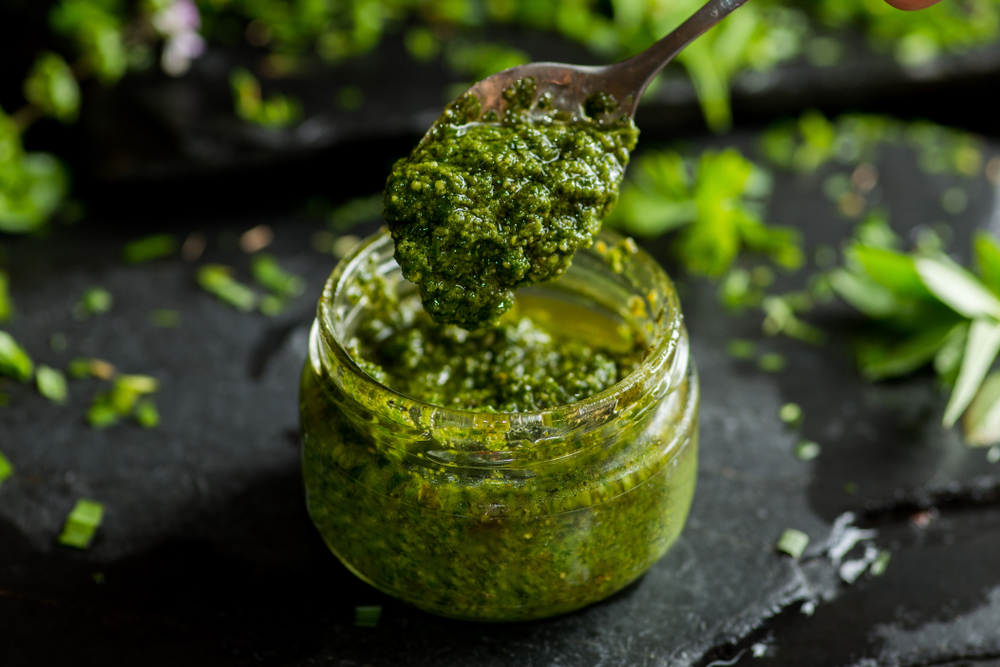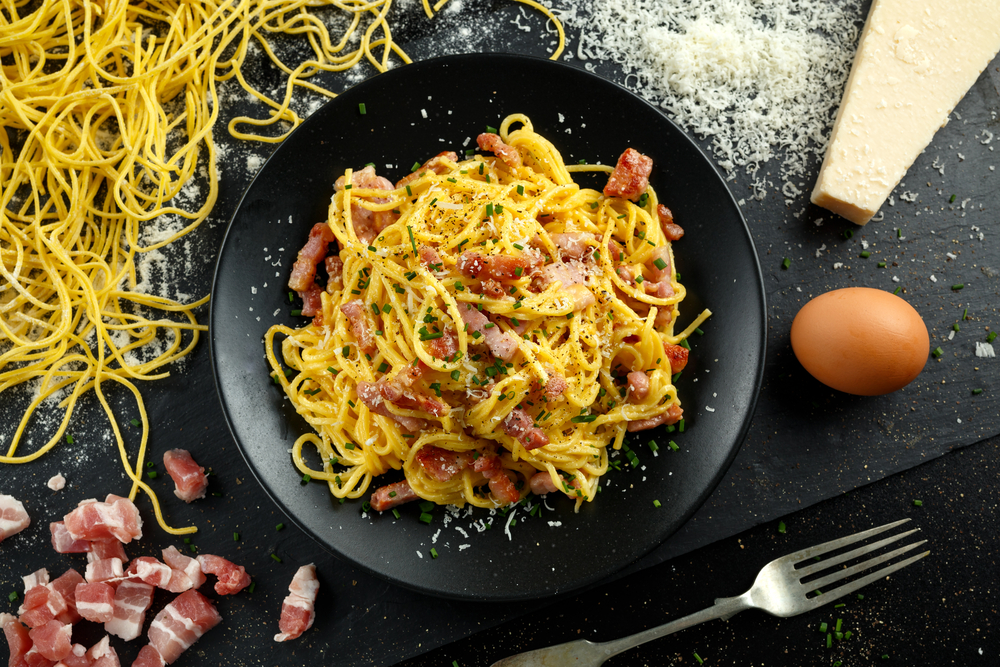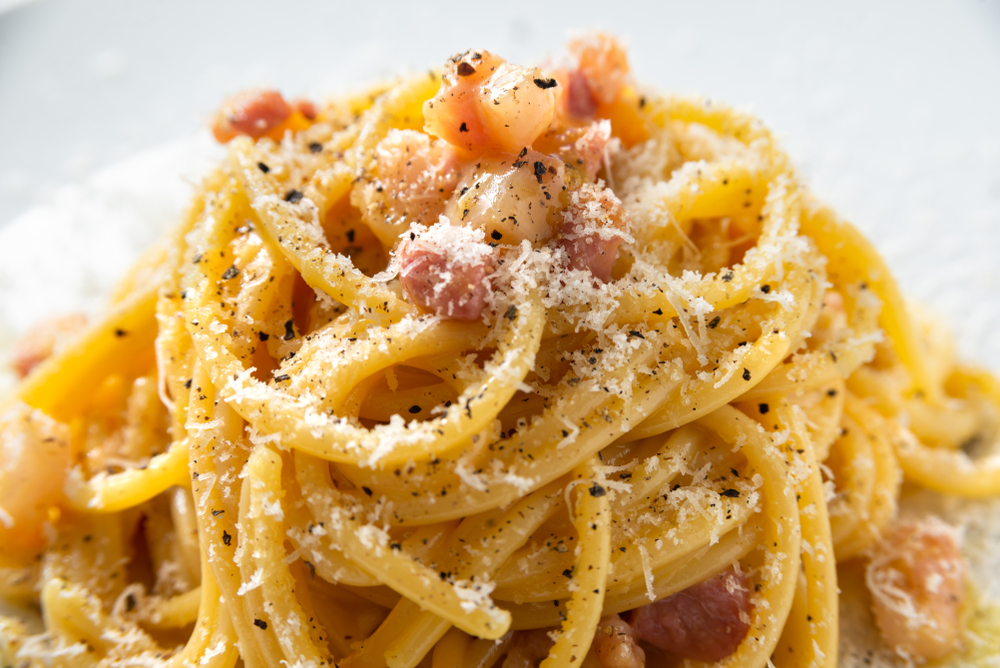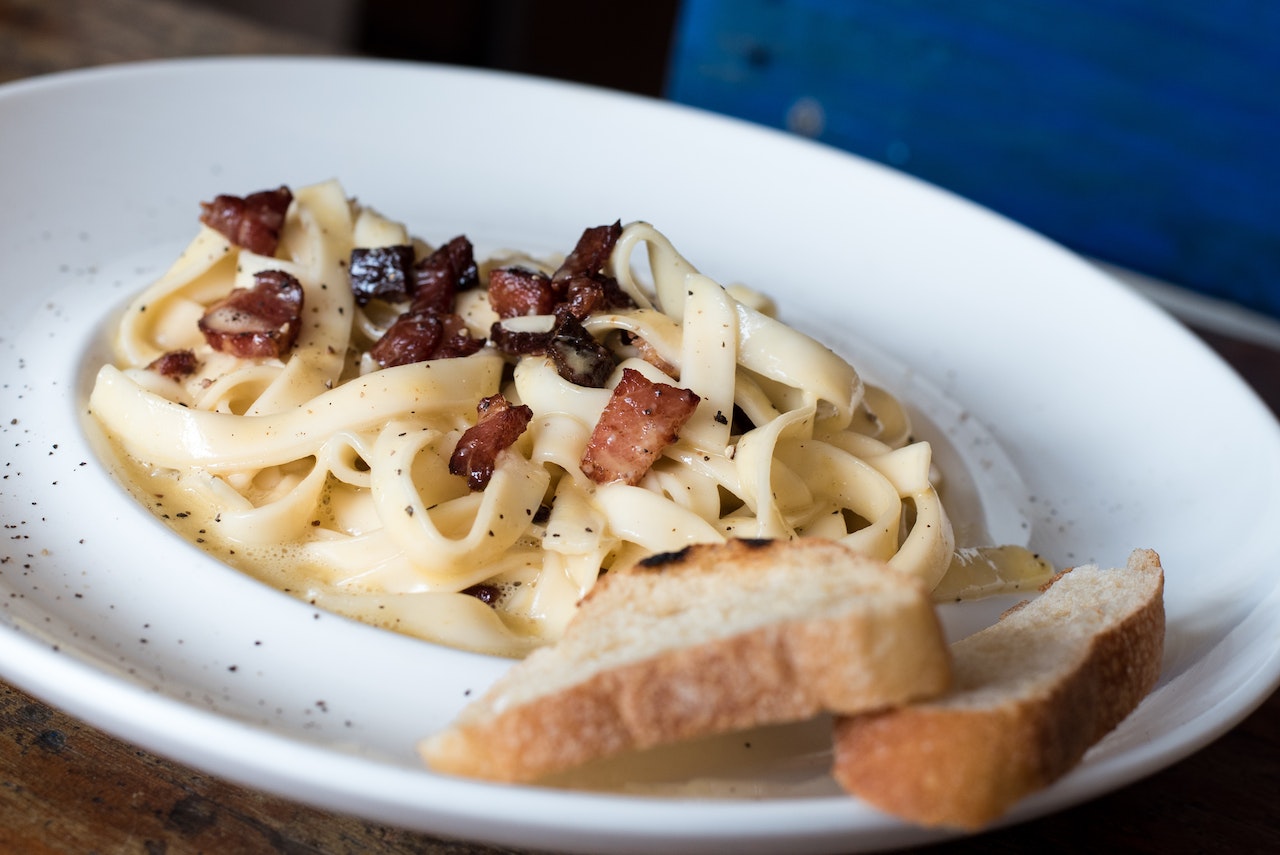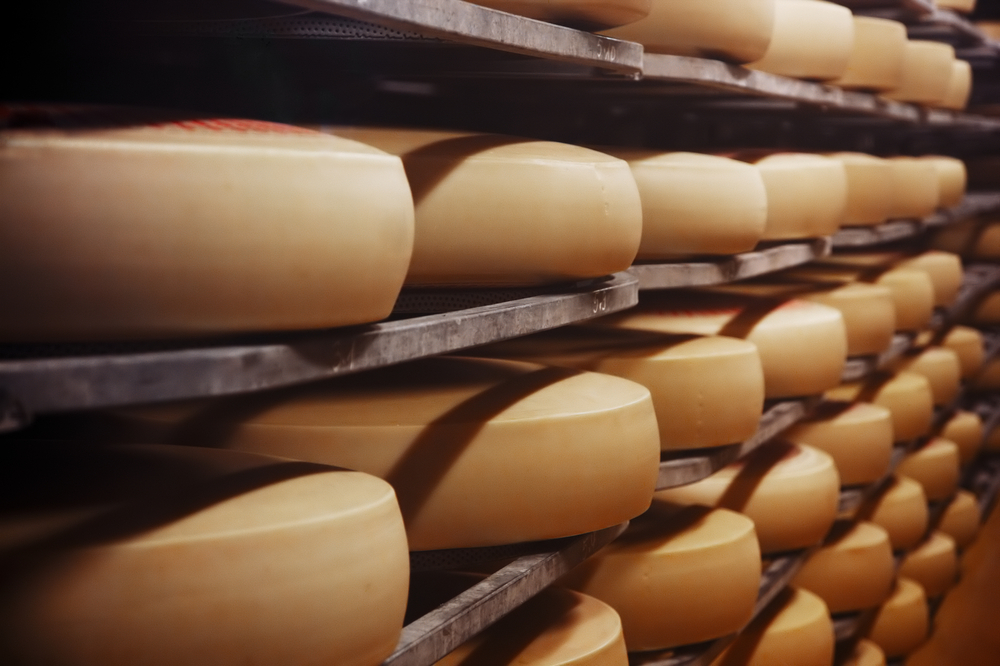If you’ve ever been to Rome and had a traditional Pasta Carbonara, you’ve undoubtedly been amazed at how much complex flavor into such a simple pasta dish. The secret is Pecorino Romano.
Pecorino is a staple cheese in Italy and one of the best additions to any pasta dish or pesto you could ever make. If you’re making a recipe and don’t happen to have any on hand though, here are some substitutes for Pecorino cheese.
Pecorino Romano can be substituted with Parmigiano, Asiago, Manchego, or Grana Padano. The key similarity between all of these cheeses is that they’re hard, aged cheeses with strong, distinct flavors.
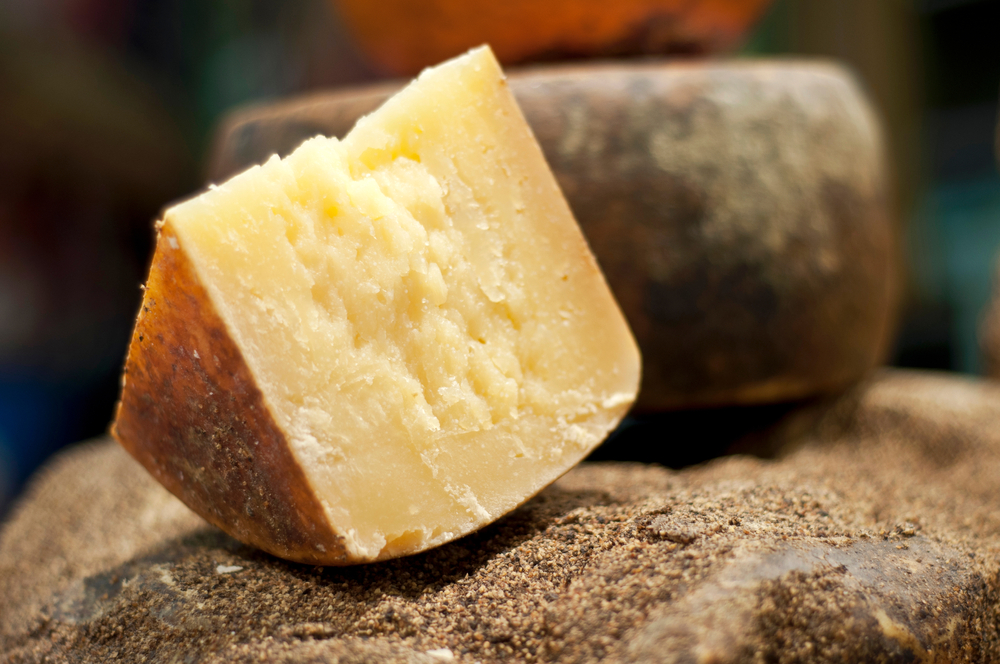
Substituting Pecorino
Pecorino Romano is a hard cheese almost exclusively used for grating, finishing, and emulsifying dishes. Pecorino becomes the base for sauces like Carbonara or a fine finishing touch on Italian salads.
For these reasons, a cheese you use to substitute Pecorino should be hard, grated, and have a flavor strong enough to hold up to the sheepy Pecorino Romano.
Parmigiano-Reggiano
This first cheese is a no-brainer as the other, most commonly used hard Italian cheese. While Parmigiano-Reggiano, or less formally Parmesan, is made from cow’s milk, it has a distinct, nutty funk to it from a much longer aging process, typically 12-24 months.
Parmesan does everything that Pecorino does and then some. Parmesan is a classic topper for salads and sandwiches alike, melts beautifully into a crunchy cheese crust, and adds all the creaminess and salty flavor that Pecorino does.
Pecorino stands out in that it has a more complex flavor profile. However, for home cooks, or anyone not well-versed in Italian cuisine, feel free to swap one out for the other.
Asiago
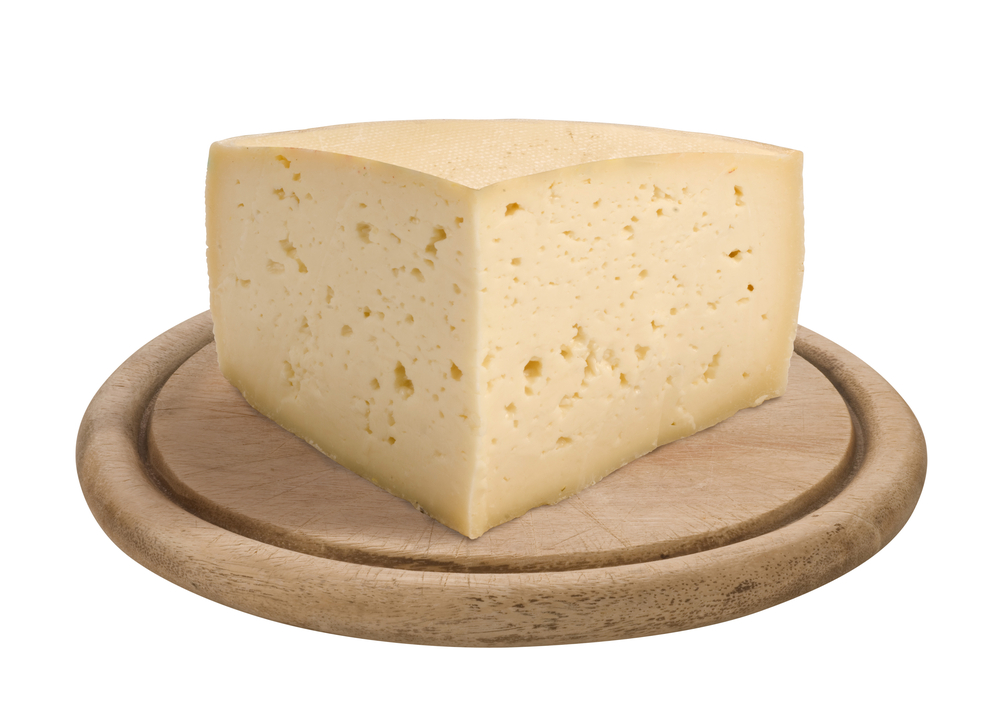
Asiago is another variety of hard Italian cheese from the north of Italy. Asiago comes in various forms from crumbled and aged to smooth and fresh.
Asiago cheese is often mistaken for Parmesan because of its sharp, nutty flavors, but they are produced in different ways in different regions. Despite their differences, the fact that they are both aged into hard cheeses from whole milk means that they can be used interchangeably.
Asiago might well be the most versatile of the cheeses on this list as it can be tastefully added to everything from soups to salads, pastas to sauces, and beyond. Liven up your next panini with freshly grated Asiago either in, for full flavor, or outside the sandwich, for a crispy, cheese shell.
Manchego
Manchego is a type of Spanish sheep’s milk cheese that can be aged for as little as 60 days or as long as 2 years.
Even though it isn’t Italian, because it’s aged and made from sheep’s milk, Manchego carries the right amount of sweet, fruity, nutty, and funky to balance dishes like Pecorino Romano can.
Be fair warned though, even though they exist in the same category of cheese, flavors are all about nuance. Manchego’s specific blend of aged tastes hits many of the same notes but is distinctly different from Pecorino.
Grana Padano
While not as common as the other cheeses on the list, Grana Padano is another excellent Pecorino substitute.
Hailing from the north of Italy, Grana Padano has a similar flavor, makeup, and production to Parmigiano Reggiano. The only difference is that Grana Padano doesn’t have the same strict production regulations that Parmigiano has.
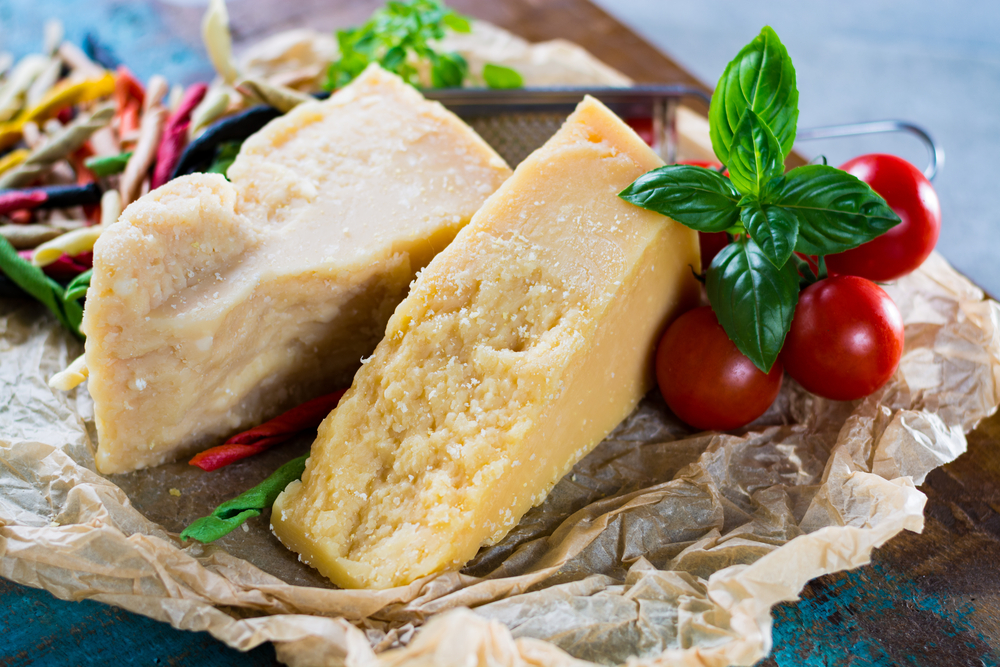
That means that if you’re looking for blocks of the real stuff, Grana Padana is your best bet for finding a semi-hard cheese on a decent budget.
Conclusion
When substituting for Pecorino, it’s important to use grateable cheese that’s aged and has sharp, funky, salty notes to it. Your best bets are Parmigiano, Asiago, Manchego, and Grana Padano, all available in the same places you’d likely find Pecorino.


